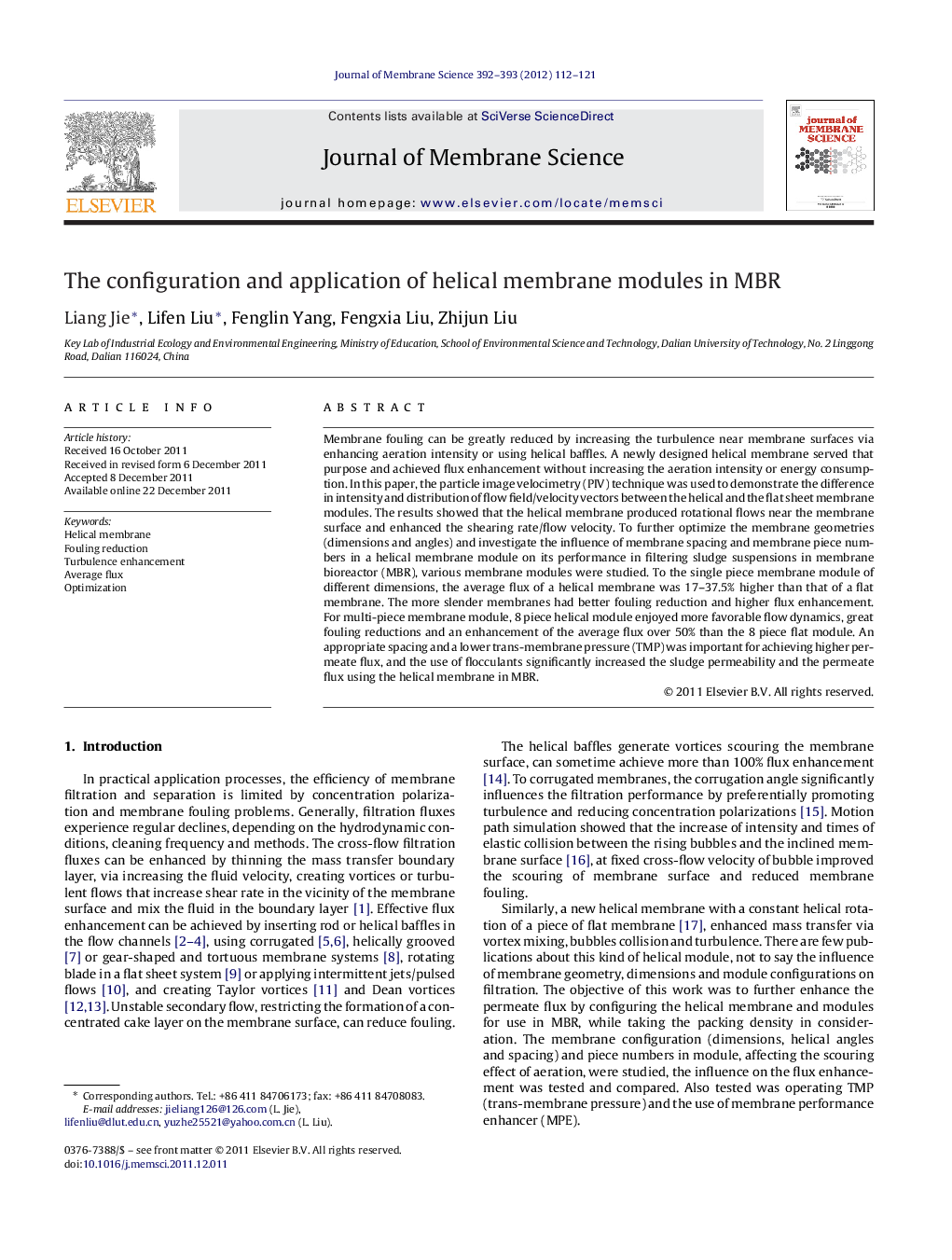| Article ID | Journal | Published Year | Pages | File Type |
|---|---|---|---|---|
| 635201 | Journal of Membrane Science | 2012 | 10 Pages |
Membrane fouling can be greatly reduced by increasing the turbulence near membrane surfaces via enhancing aeration intensity or using helical baffles. A newly designed helical membrane served that purpose and achieved flux enhancement without increasing the aeration intensity or energy consumption. In this paper, the particle image velocimetry (PIV) technique was used to demonstrate the difference in intensity and distribution of flow field/velocity vectors between the helical and the flat sheet membrane modules. The results showed that the helical membrane produced rotational flows near the membrane surface and enhanced the shearing rate/flow velocity. To further optimize the membrane geometries (dimensions and angles) and investigate the influence of membrane spacing and membrane piece numbers in a helical membrane module on its performance in filtering sludge suspensions in membrane bioreactor (MBR), various membrane modules were studied. To the single piece membrane module of different dimensions, the average flux of a helical membrane was 17–37.5% higher than that of a flat membrane. The more slender membranes had better fouling reduction and higher flux enhancement. For multi-piece membrane module, 8 piece helical module enjoyed more favorable flow dynamics, great fouling reductions and an enhancement of the average flux over 50% than the 8 piece flat module. An appropriate spacing and a lower trans-membrane pressure (TMP) was important for achieving higher permeate flux, and the use of flocculants significantly increased the sludge permeability and the permeate flux using the helical membrane in MBR.
Graphical abstractHelical membranes with 8 pieces enjoyed more favorable dynamic flow, great fouling reductions and an enhancement of the average flux over >50% than using the flat membrane.Figure optionsDownload full-size imageDownload high-quality image (84 K)Download as PowerPoint slideHighlights► The flow field near the helical/flat membrane was compared using the PIV technique. ► The optimal membrane dimensions/geometries, spacing and piece number in a module were determined. ► Slender membrane and multi-piece modules are advantageous in flux enhancement. ► Lower operating TMP and using flocculants increased flux enhancements by the helical modules.
